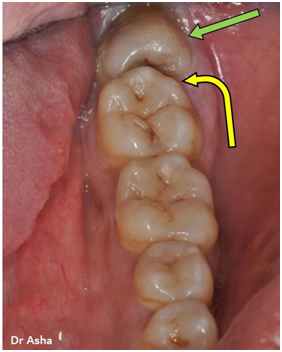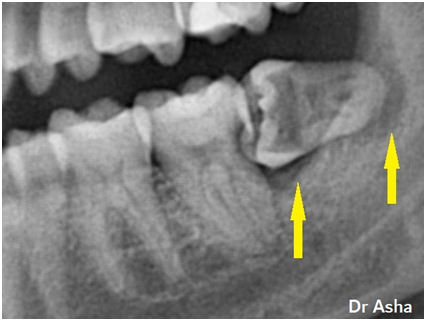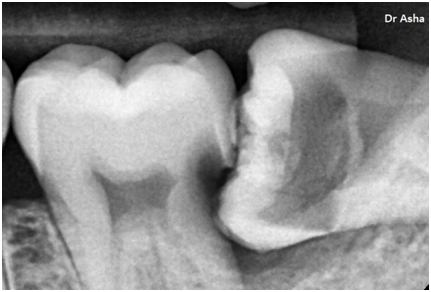Do Wisdom Teeth Really Need To Be Removed?
Do Wisdom Teeth Really Need To Be Removed?
The answer is, “it depends”.
The decision whether to remove your wisdom tooth or not, is made after an examination of the tooth and its relationship to other teeth. X-rays (radiographs) are necessary to understand the position of the wisdom teeth within the jaws.
Other factors that affect the decision to remove the wisdom tooth include the possibility of recurrent infection and the future usefulness of the tooth.
Conditions when your wisdom tooth can be left alone:
1. The wisdom tooth is not visible in the mouth at all, i.e. it is completely buried in the jawbone. Then chances are the tooth can be left alone. It is wise to monitor the tooth by taking X-rays periodically to make sure that problems like cysts do not occur around the buried tooth.
2. The wisdom tooth has grown completely into the mouth and is in good alignment with the other teeth and can be easily cleaned with your toothbrush and floss
Conditions when your wisdom tooth needs to be removed:
1. The wisdom tooth has partially grown into the mouth and then gets stuck (impacted) because of lack of space in the jaws.
2. The gums around the wisdom tooth keeps getting infected (pericoronitis)
3. The wisdom tooth has decay
4. The wisdom tooth affects adjacent teeth e.g. maccumulation of food debris between the impacted wisdom tooth and the tooth in front of it leads to tooth decay. The decay can often go undetected as in the early stages there may be no pain. (Please see images a, b and c below)
5. Plaque accumulation around the wisdom tooth causes gum disease and bone loss.
6. The tooth has no function i.e. it is not used for chewing because the wisdom tooth in the opposing jaw has been lost.
7. The wisdom tooth interferes with other treatment e.g. treatment with braces to straighten the teeth or, construction of dentures & implants
8. The tooth is associated with conditions like cysts or tumours

This photo shows a wisdom tooth (green arrow) huddled behind the 2 nd molar. The wisdom tooth is lying on its side and jammed – or impacted – against the tooth in front of it.
Food debris can collect in the groove (yellow arrow) between the two teeth. This groove is almost impossible to clean
Decay can develop in hidden areas between the teeth.
In the early stages, such decay is often undetected as there is no pain.
Left alone, the decay will grow.
This is the X-ray of the same case.
Decay had begun in between the teeth and hollowed out the horizontally impacted wisdom tooth and caused decay on the back surface of the 2nd molar. The extensive decay has caused infection that has destroyed bone around the roots and in-between the teeth. This is indicated by the yellow arrows.


c) This close-up X-ray shows how food debris & bacteria stuck between the teeth have caused extensive decay of both the wisdom tooth and the tooth in front of it.
In this case, both teeth had to be removed.
To Summarise, the common reasons for removing a wisdom tooth are:
- It is impacted or jammed against adjacent teeth, bone or cheeks
- It is very difficult to clean – likely to cause tooth decay or gum disease.
- It is over-grown and out of alignment or interfering with your bite.
- It is badly decayed or damaged
- It is shaky due to bone loss caused by gum infection
- It makes it more difficult to straighten your teeth with orthodontic treatment
- It will be an obstruction for dentures, implants or any other kind of appliance.
